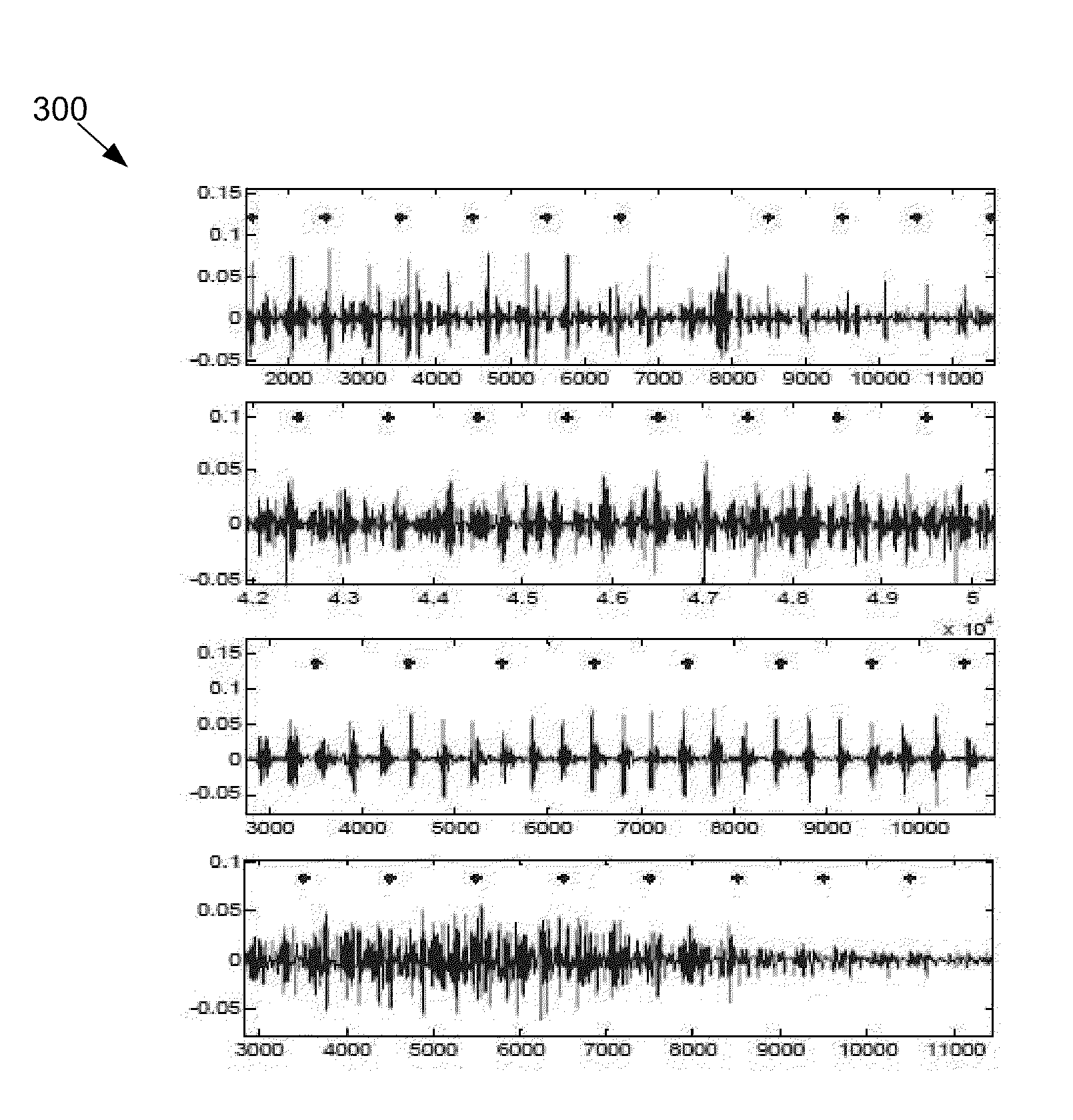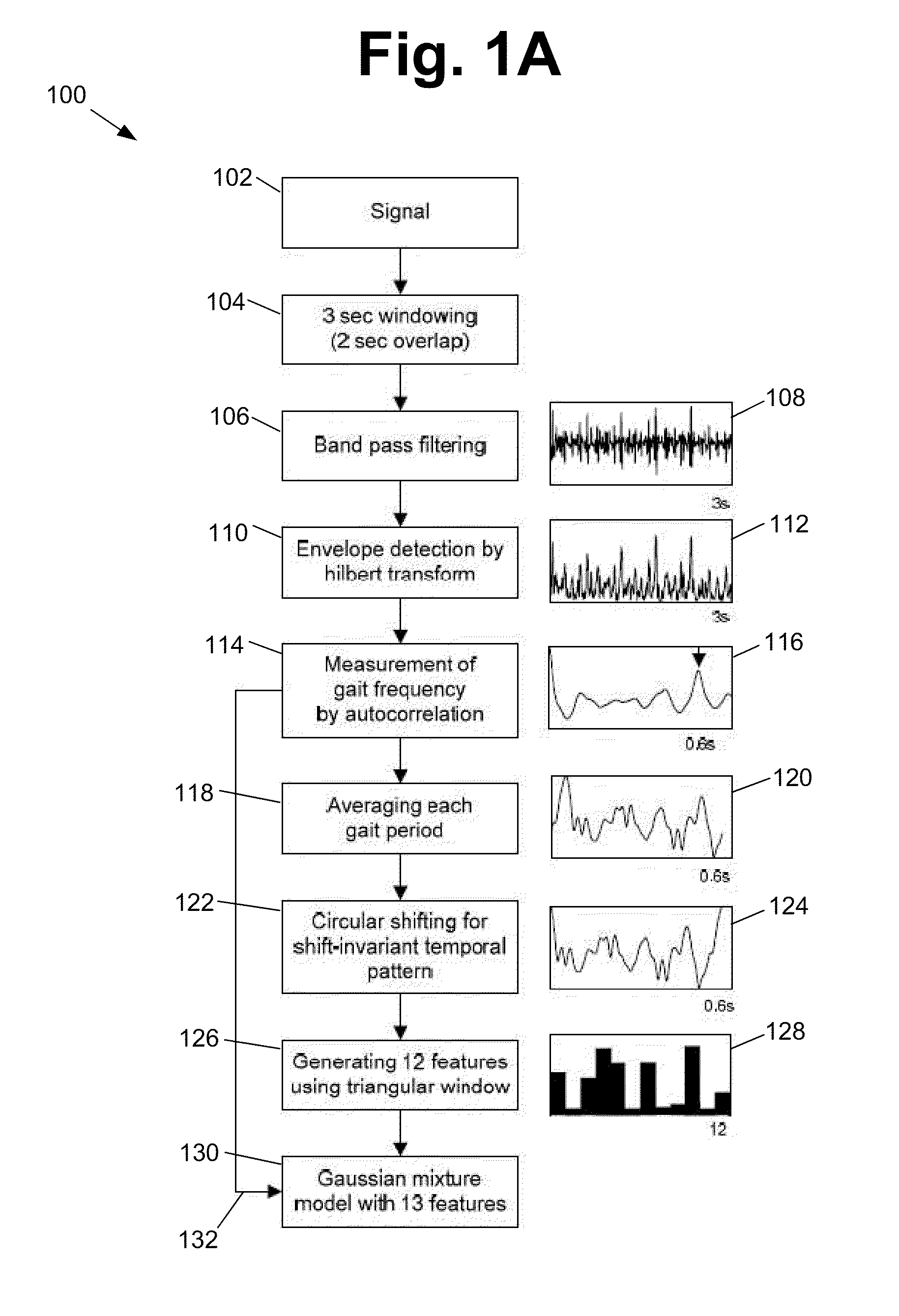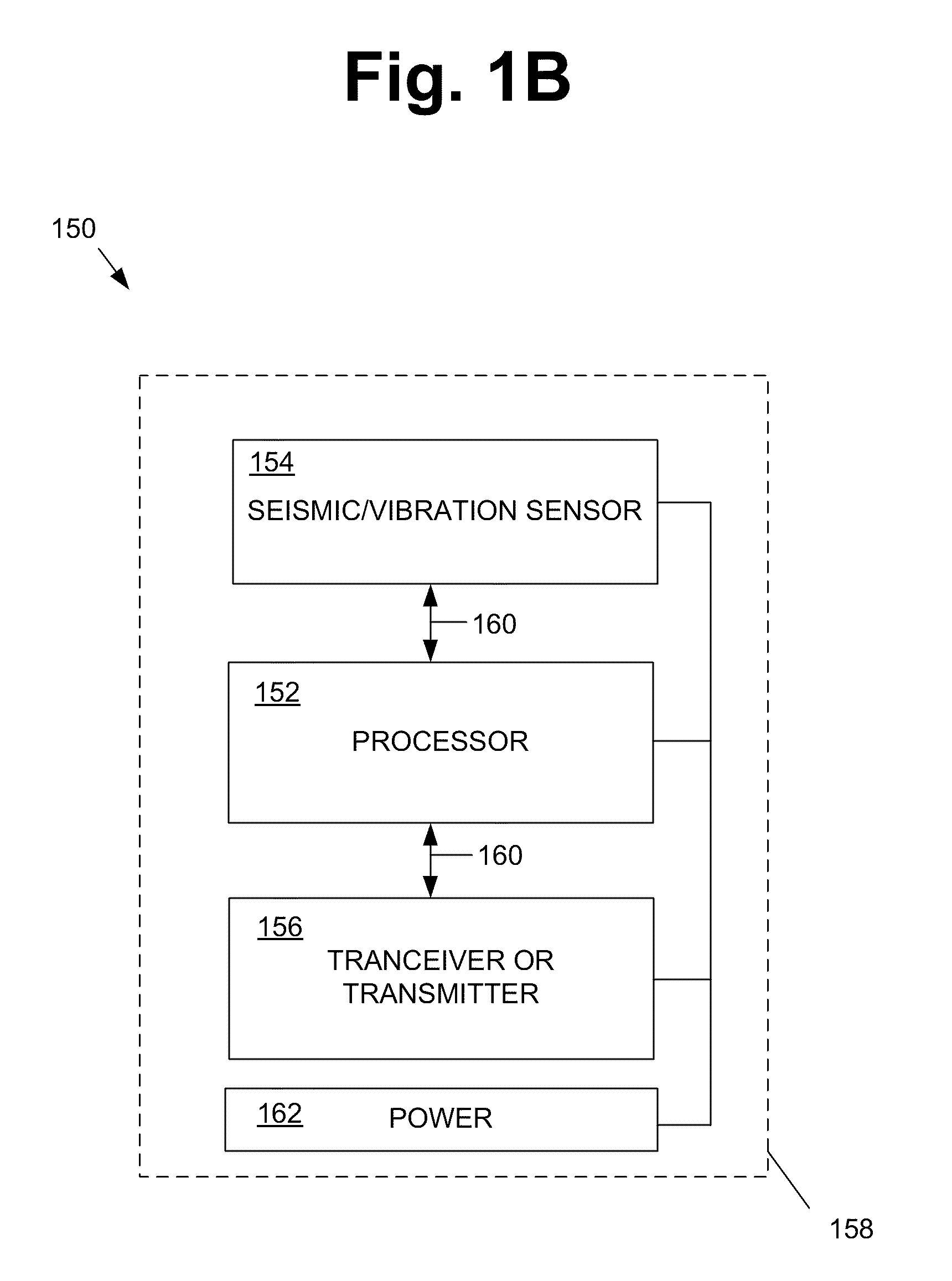Cadence analysis of temporal gait patterns for seismic discrimination
a temporal gait pattern and pattern analysis technology, applied in the field of signal analysis of seismic signals, can solve the problems of discrimination between human and animal footsteps using frequency analysis as inadequate in many situations, and the creation of artificial vibrations intended to cause confusion in the recognition process is very difficult, and achieves the effect of enhancing the signal-to-noise ratio of seismic data
- Summary
- Abstract
- Description
- Claims
- Application Information
AI Technical Summary
Benefits of technology
Problems solved by technology
Method used
Image
Examples
Embodiment Construction
[0051]Illustrative embodiments are now described. Other embodiments may be used in addition or instead. Details that may be apparent or unnecessary may be omitted to save space or for a more effective presentation. Conversely, some embodiments may be practiced without all of the details that are disclosed.
[0052]Aspects of the present disclosure are directed to seismic cadence analysis providing discrimination between human footsteps and other seismic / vibration signals.
[0053]FIG. 1A depicts a box diagram of a method 100 for cadence analysis of temporal gait patterns, in accordance with exemplary embodiments of the present disclosure. Method 100 can, of course, be implemented as suitable computer-readable instructions in a computer-readable medium (flash, RAM, ROM, etc.) and / or by corresponding signals, e.g., suitable for transmission over a communications network (LAN, WAN, Internet, wireless IR or RF, etc.). General portions / steps of method 100 include extracting features from seism...
PUM
 Login to View More
Login to View More Abstract
Description
Claims
Application Information
 Login to View More
Login to View More - R&D
- Intellectual Property
- Life Sciences
- Materials
- Tech Scout
- Unparalleled Data Quality
- Higher Quality Content
- 60% Fewer Hallucinations
Browse by: Latest US Patents, China's latest patents, Technical Efficacy Thesaurus, Application Domain, Technology Topic, Popular Technical Reports.
© 2025 PatSnap. All rights reserved.Legal|Privacy policy|Modern Slavery Act Transparency Statement|Sitemap|About US| Contact US: help@patsnap.com



